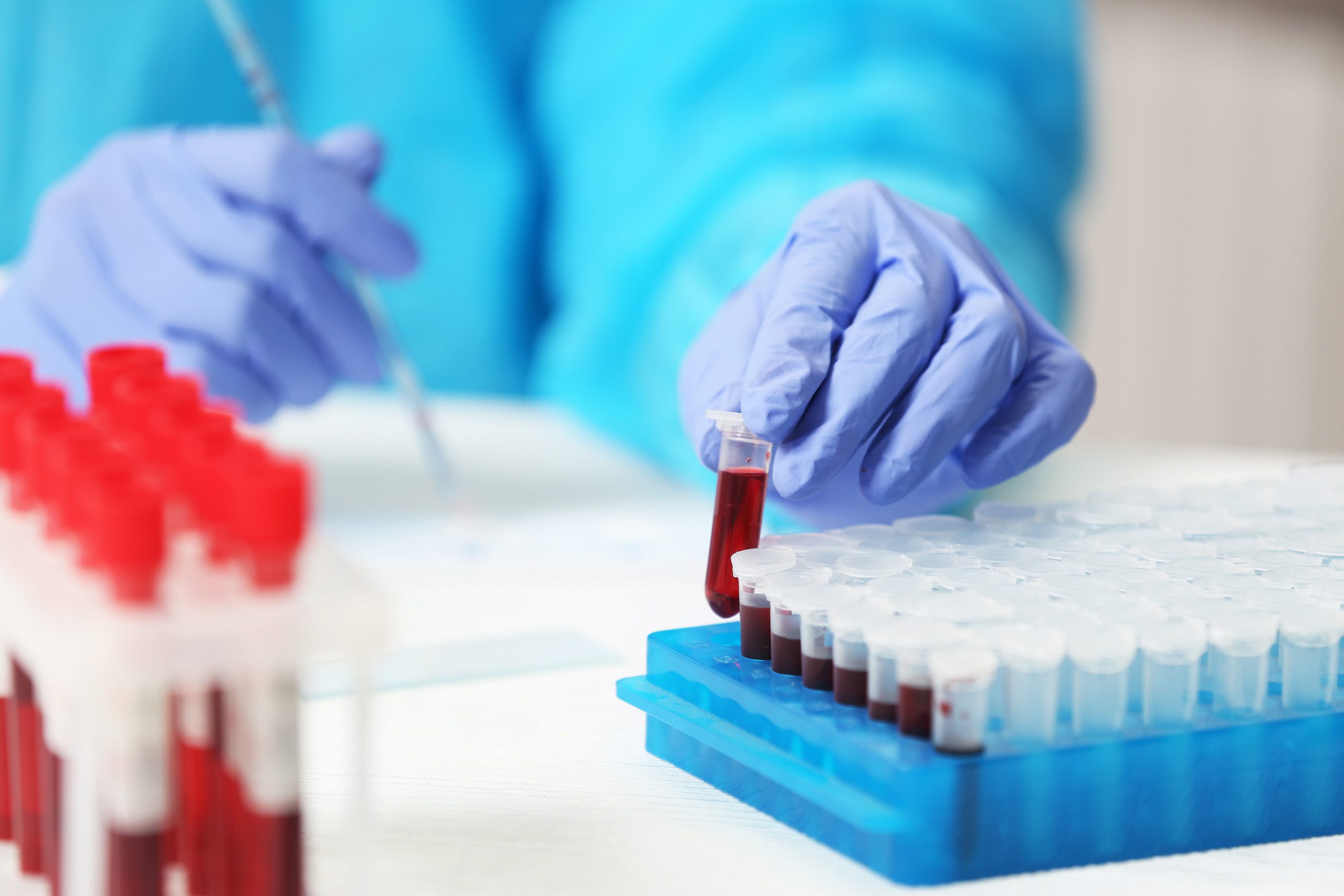This guidance applies in England

The tuberculin skin test is the default test used when a cattle herd has a TB breakdown. The interferon-gamma blood test is also used in some cases to supplement the skin test.
The TB Skin Test
The tuberculin skin test is used to find cattle infected with Mycobacterium bovis (aka bovine TB). Two different interpretations of the skin test are used, depending on the disease situation. The sensitivity of a test is the probability that an infected animal (in this case with TB) will be correctly identified as infected by the test. Test developers can use different cut-off points to raise or lower the sensitivity of a test to achieve different things.
The default used for all routine surveillance TB testing.
Used in circumstances where bovine TB is strongly suspected or confirmed in a cattle herd e.g. testing animals during a TB breakdown, and in England only, animals traced from lesion and/or culture positive TB breakdown herds. The sensitivity of the test is increased meaning it:
- Improves detection of TB-infected animals in a herd.
- Speeds up resolution of a TB breakdown as fewer animals are missed.
- Reduces the risk of leaving TB-infected animals behind when movement restrictions are lifted at the end of a TB breakdown.
Short interval skin testing
Short interval tests include all animals in the herd and are carried out at minimum intervals of 60 days. Calves under 42 days of age are excluded from short interval testing, unless a risk is identified in this age group. The 60 day period is from the date the last reactor left your herd (and therefore the last possible day reactors could have infected other animals). If no reactors were found at a test, the next test is scheduled 60 days from the injection date of the previous test.
The 60 day interval is used to prevent animals from becoming desensitised to the skin test – a phenomenon where their skin reactivity is depressed for some time afterwards. Repeated skin testing in chronically TB-affected herds doesn’t appear to have a significant desensitising effect so long as the 60 day interval is observed.
In the High Risk Area (HRA) and Edge Area, all TB breakdown herds must complete at least two consecutive short interval tests at severe interpretation with negative results before the officially TB free (OTF) status of the herd can be restored. In the Low Risk Area (LRA), TB breakdown herds must complete one or more short interval tests before the OTF status of the herd can be restored. The number of tests and the interpretation depends on certain criteria, and whether any lesions suspicious of TB are found and/or M. bovis is cultured from reactors or slaughterhouse cases that triggered the breakdown.
Interferon-gamma blood testing

The interferon-gamma test (or gamma test for short) is a supplementary blood test used alongside the tuberculin skin test to maximise the probability of detecting TB-infected animals. It has been used in the UK since 2006.
All new TB breakdowns in the LRA and annual testing parts of the Edge Area with lesion and/or culture positive animals are eligible for mandatory gamma testing. In the six-monthly testing parts of the Edge Area and the HRA, mandatory gamma testing only applies to TB breakdown herds with lesion and/or culture positive animals that meet certain criteria.
Animals less than six months old are excluded from gamma testing as their immune systems are still developing which can interfere with the test and lead to false positive results.

Levels of interferon gamma can be measured, and like the skin test, blood samples from TB-infected animals will release greater amounts in response to bovine tuberculin compared to avian tuberculin.
The sooner the gamma test is deployed, the greater its potential benefits such as reducing the length of time that the herd is under TB restrictions. Where practical, the gamma test is completed before the first short interval test in new TB breakdowns. APHA will discuss the timing of gamma testing with the herd owner before arranging the test. If the gamma test is carried out at the same time as the skin test, the blood sample is taken before the injections of tuberculins on day 1 of the test (TT1) or after the reading of the skin test on day 2 of the test (TT2).
There are four possible outcomes of the gamma test. Blood testing may affect the timing of the next short interval test, which will be confirmed by APHA.
The animal has failed the test and is classed as a reactor (gamma reactor). It is compulsorily slaughtered and compensation is paid.
The animal has passed the test.
When a blood sample fails a quality control in the lab and is then re-tested and fails for a second time, the lab will request a new blood sample from the same animal (APHA will advise the herd owner accordingly). On occasions and following a veterinary risk assessment, animals with a re-sample result do not need to be tested again. An animal is only re-sampled once.
The blood sample was not tested by the lab and another blood sample will need to be collected from the animal. Reasons for this include the samples not meeting the required temperature range for testing.
Check Tests
Check tests are used to test the rest of the herd when one or more reactors are found at a test that doesn’t include all the animals in the herd e.g. a pre-movement test. This check test needs to be completed before the short interval testing regime starts. Check tests are also used when a slaughterhouse case is found at the abattoir and APHA are waiting for the culture result. Check tests include all animals in the herd except calves under 42 days of age.


Useful resources
- Factsheets on the skin test and interferon-gamma blood test
- More information about the tuberculin skin test
- Find out more about the interferon-gamma blood test